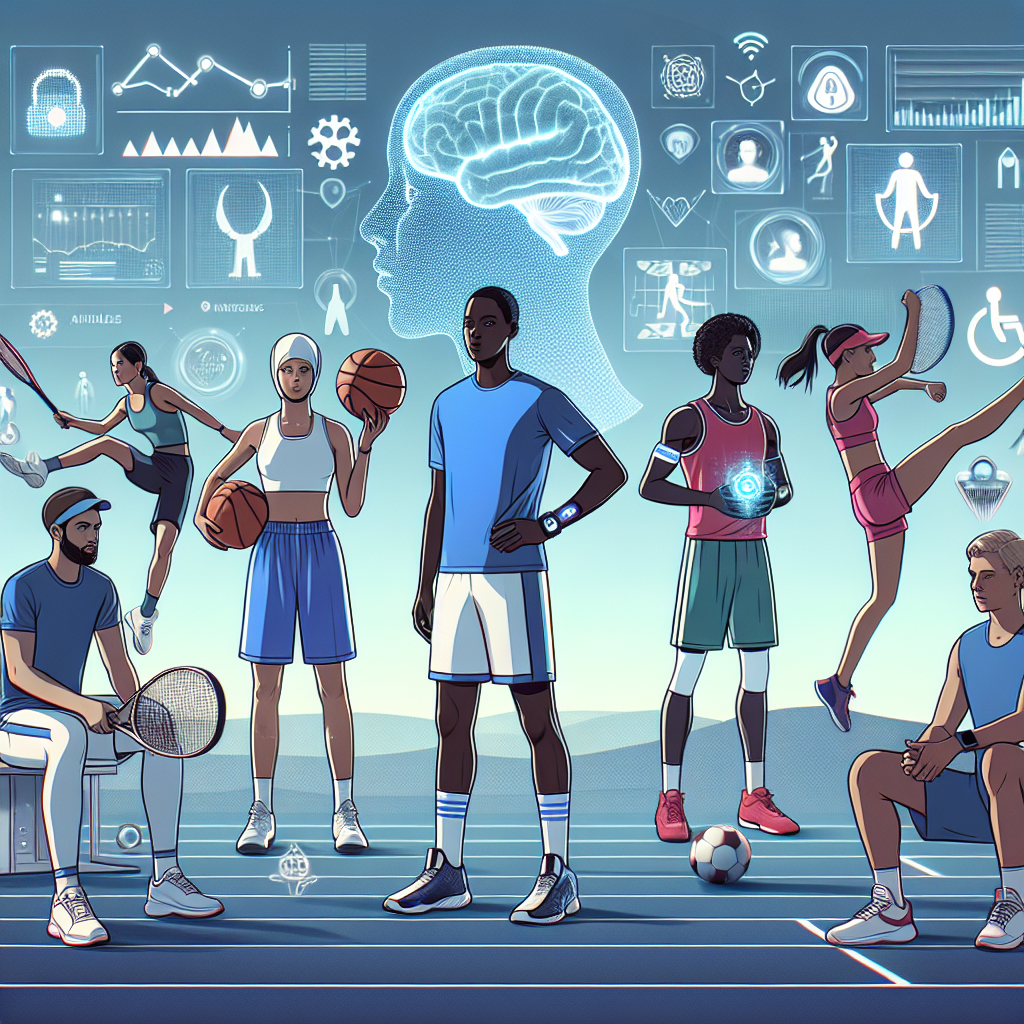AI-Powered Sports Injury Prevention Programs: A Game-Changer in Athletic Performance
Sports injury prevention is a critical component of athletic performance, as injuries can not only hinder an athlete’s ability to compete but also have long-term consequences on their health and well-being. In recent years, advancements in artificial intelligence (AI) technology have revolutionized the way sports injury prevention programs are designed and implemented, leading to more effective and personalized strategies for athletes of all levels.
AI-powered sports injury prevention programs utilize machine learning algorithms to analyze vast amounts of data, including athlete performance metrics, biomechanical data, injury history, and environmental factors. By processing this information, AI can identify patterns and trends that may predispose an athlete to injury, allowing for the development of targeted prevention strategies tailored to each individual.
One of the key advantages of AI-powered sports injury prevention programs is their ability to provide real-time feedback and monitoring to athletes and coaches. By integrating wearable sensors and other tracking devices, AI can continuously assess an athlete’s movements and performance, alerting them to potential injury risks and suggesting corrective actions to prevent injury before it occurs. This proactive approach not only reduces the likelihood of injury but also improves overall athletic performance by optimizing movement patterns and technique.
Furthermore, AI-powered sports injury prevention programs can help athletes and coaches make more informed decisions about training loads, recovery strategies, and rehabilitation protocols. By analyzing data from past injuries and monitoring progress over time, AI can provide personalized recommendations for optimizing training programs and minimizing the risk of reinjury. This level of precision and customization is a game-changer in sports injury prevention, as it allows athletes to train smarter, not harder, and maintain peak performance levels throughout their careers.
In addition to individualized injury prevention strategies, AI-powered programs can also benefit teams and organizations by identifying trends and patterns across a group of athletes. By analyzing data from multiple sources, AI can pinpoint common risk factors and areas for improvement within a team, enabling coaches and trainers to implement targeted interventions that address the specific needs of their athletes. This collaborative approach to injury prevention not only enhances team performance but also fosters a culture of safety and well-being within the organization.
As AI technology continues to evolve, the potential for sports injury prevention programs to become even more sophisticated and effective is limitless. By incorporating additional data sources, such as genetic information, nutritional profiles, and psychological factors, AI can provide a holistic view of an athlete’s health and performance, enabling more comprehensive and personalized injury prevention strategies. Furthermore, advancements in predictive analytics and machine learning algorithms can help AI anticipate and prevent injuries before they occur, leading to even greater success in keeping athletes healthy and performing at their best.
FAQs:
Q: How does AI-powered sports injury prevention differ from traditional injury prevention programs?
A: Traditional injury prevention programs rely on standardized protocols and general guidelines for reducing injury risk, whereas AI-powered programs use personalized data and machine learning algorithms to tailor prevention strategies to each individual athlete.
Q: What types of data are used in AI-powered sports injury prevention programs?
A: AI-powered programs utilize a wide range of data sources, including athlete performance metrics, biomechanical data, injury history, environmental factors, and wearable sensor data, to analyze patterns and trends that may predispose an athlete to injury.
Q: How can AI help athletes and coaches make more informed decisions about training and recovery?
A: By analyzing data from past injuries and monitoring progress over time, AI can provide personalized recommendations for optimizing training programs, recovery strategies, and rehabilitation protocols, ultimately reducing the risk of injury and improving overall performance.
Q: How can AI-powered sports injury prevention programs benefit teams and organizations?
A: AI-powered programs can identify common risk factors and areas for improvement within a team, enabling coaches and trainers to implement targeted interventions that address the specific needs of their athletes. This collaborative approach enhances team performance and promotes a culture of safety and well-being.
Q: What is the future of AI-powered sports injury prevention programs?
A: As AI technology continues to evolve, the potential for sports injury prevention programs to become even more sophisticated and effective is limitless. By incorporating additional data sources and advancements in predictive analytics, AI can provide more comprehensive and personalized injury prevention strategies, leading to greater success in keeping athletes healthy and performing at their best.
In conclusion, AI-powered sports injury prevention programs represent a significant advancement in the field of athletic performance, offering personalized and proactive strategies for reducing injury risk and optimizing training programs. By harnessing the power of AI technology, athletes, coaches, and organizations can benefit from more effective and efficient injury prevention strategies that promote long-term health and success in sports. As AI continues to evolve, the future of sports injury prevention looks brighter than ever, with the potential to revolutionize the way athletes train, compete, and stay injury-free.

